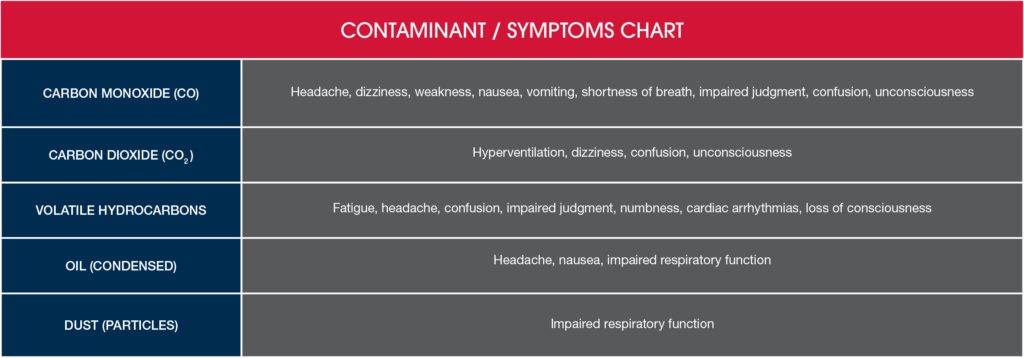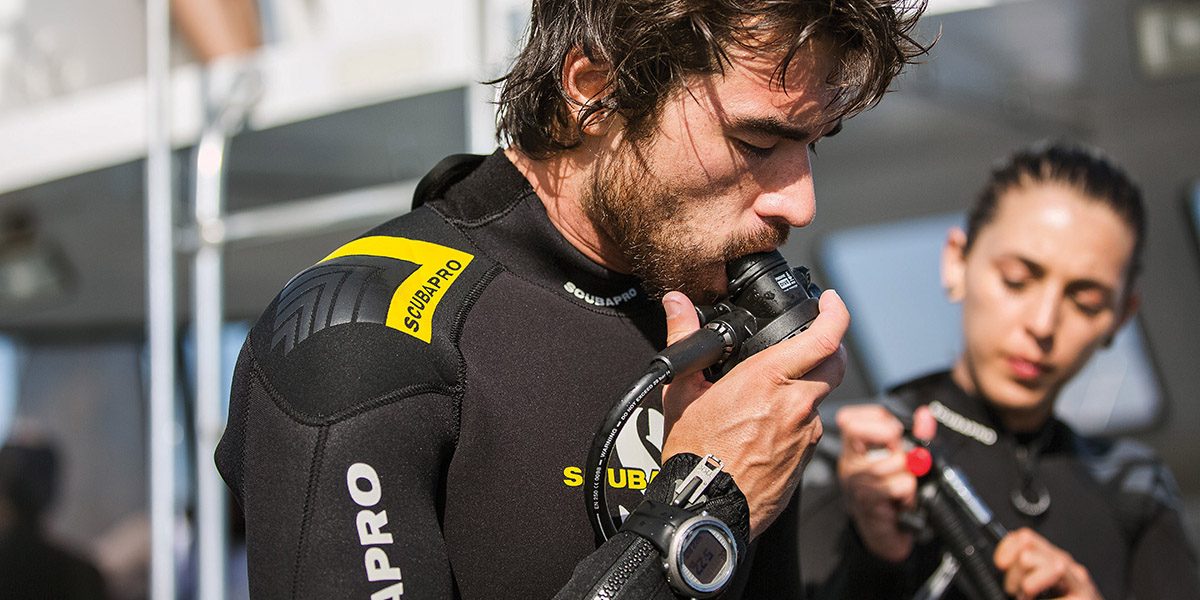Les effets sur la santé des plongeurs varient en fonction du contaminant. Les symptômes les plus graves liés à l'inhalation de gaz contaminés sont l'altération du jugement et la perte de conscience, qui peuvent toutes deux être mortelles sous l'eau.

Identifying contamination cases based on symptoms alone can prove difficult. The symptoms are often vague and are similar to other illnesses. If divers suspect exposure to bad breathing gas, they should seek a medical evaluation and analyze the gas in their tank.
Symptoms need to be evaluated in the context of the dive exposure. Typically, a group of divers will have their tanks filled from the same source. Monitoring fellow divers who had their tank filled by the same source can help determine whether symptoms are related to gas contamination.
For Compressor Operators
- Be attentive to compressor maintenance to ensure quality compressed breathing gas and extend the life of the compressor.
- Perform safe air fill procedures. Before filling tanks, inspect the compressor filters for damage and contaminants or engine exhaust near the intake. Filling should stop immediately if chemical or oily odors are detected. Keep records of air fills, maintenance and operator qualifications; use proper oil and filters; and maintain a clean and organized tank-filling room.
- Air quality testing. Several methods of testing are available varying in price and complexity. Continuous CO and moisture monitoring devices are available. Sending a breathing-gas sample to an accredited laboratory for analysis is recommended on a quarterly basis.
Sources of contamination vary, but include impurities existing in the surrounding environment (engine exhaust, carbon dioxide, dust particles) and/or by-products of the compression process (carbon monoxide or hydrocarbons from compressor lubricants).
Pour les plongeurs
- Get air fills from a reputable dive shop or club.
- Ask questions and be observant of compressor maintenance, fill procedures, breathing gas analysis, and records.
- Conduct a predive gas check. If your breathing gas has an unusual odor or taste, do not dive with it.
- Check your cylinder for carbon monoxide (CO)—an odorless, tasteless and colorless gas. Electronic CO detectors or color indicating devices can detect the presence of CO in breathing gas.
Some contaminants may not cause direct harm to your health; rather, they can cause equipment damage increasing the your risk of injury. Excessive moisture may cause:
- Regulators to freeze or malfunction
- Corrosion and oxidation of scuba tanks
- Reduce the efficiency of compressor filtration
DAN CAN HELP
DAN is offering gas analysis assistance. If you were involved in an incident possibly related to breathing contaminated gas and you have lawful control of the tank, preserve the tank and contact DAN Research at +1 (919) 684-2948 or via email at .
